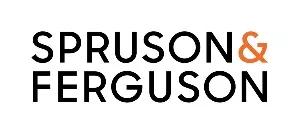- within Intellectual Property topic(s)
- in United States
- within Privacy topic(s)
- with Senior Company Executives, HR and Finance and Tax Executives
- with readers working within the Banking & Credit and Technology industries
Following our first article on orphan drug development, which examined key patenting options and strategies, our second article sets out the key regulatory considerations in Australia.
Orphan drug patent strategy recap:
- Start early, think long: broaden patent protection with primary and secondary patents covering additional commercially relevant aspects of the technology
- Patent protection may be broadened by pursuing claims directed to the substance per se, medical uses, formulations & delivery routes, as well as claims directed to biomarkers, methods of manufacture and combination therapies
- In Australia, patent term extensions can provide an additional 5 years protection for orphan drugs.
Orphan drug designation
In Australia, drugs are regulated by the Therapeutic Goods Act 1989 and delegated legislation including the Therapeutic Goods Regulations 1990 (TG Regs) and assessed by the Therapeutic Goods Administration (TGA).
The TG Regs have special provisions to reduce the costs of having orphan drugs included on the Australian Register of Therapeutic Goods (ARTG). If a drug is designated as an "orphan drug," it is eligible for a waiver of the application and evaluation fees otherwise payable to register the drug as a prescription medicine.
The definition of "orphan drug" for the purpose of the TG Regs is not confined to drugs for rare diseases. It covers drugs that are indicated for the treatment, prevention or diagnosis of life – threatening or seriously debilitating conditions in a particular class of patients and, in the case of drugs that do not involve a new dosage form, one or more of the following must apply:1
- the drug is intended to treat a disease that affects fewer than 5 in 10,000 individuals in Australia;
- the drug is intended to prevent or diagnose a condition, where, if it were included in the ARTG, would not be likely to be supplied to more than 5 in 10,000 individuals in Australia during each year that it is included; or
- the drug is not likely to be financially viable for the sponsor to market the medicine in Australia unless it receives a fee waiver.
Orphan drug designation may be granted for previously unregistered medicines, already registered medicines with a new orphan indication or new dosage forms under certain circumstances.2
Data exclusivity
Another feature of the regulatory regime under Australia's therapeutic goods regime are the data exclusivity provisions. Although not specific to orphan drugs, data exclusivity provides an important incentive for orphan drug development by providing an appropriate mechanism to keep generic competition off the market for a period of time sufficient to justify the expense and risk associated with development of the drug.
While the sponsor of a generic drug that seeks to have a generic drug included on the ARTG may be able to rely upon information supplied by the originator sponsor, s 25A of the Therapeutic Goods Act 1989 may limit that reliance. In particular, where the information concerns an application to register therapeutic goods and it has been less than five years since those goods were registered, that information may be protected from disclosure.
Australia's approach to data exclusivity is narrower than that of the US or Europe. Exclusivity is available only for confidential information submitted to support the registration of a new chemical entity. This means that clinical data used to support other types of applications, such as new indications, dosage forms, routes of administration, or combination products, is not afforded the same protection.
In practice, this leaves applicants who are first to register, say, a new therapeutic use of an existing drug, reliant solely on patent protection to maintain a competitive advantage.
Pharmaceutical Benefits Scheme
Where the TGA has designated a drug as an "orphan drug", then an applicant seeking to have that drug included on the Pharmaceutical Benefits Scheme (PBS) may be able to seek a fee exemption, although additional conditions may apply. These are presently detailed in the National Health (Pharmaceuticals and Vaccines–Cost Recovery) Regulations 2022.
Other government programs may also assist with the costs related to the regulatory costs associated with drugs, including orphan drugs.
One such example includes Zolgensma (onasemnogene abeparvovec), which marks a significant milestone as the first gene therapy listed on Australia's PBS.
Approved by the TGA in early 2021 and added to the PBS in May 2022, it offers life-changing, one-time treatment for infants under 9 months with spinal muscular atrophy (SMA), a condition previously managed with continual therapies. Given its staggering cost (reported to exceed AUD 2 million), PBS listing eases the financial burden for families and healthcare systems, illustrating how orphan-drug incentives and regulatory mechanisms can facilitate access to cutting-edge treatments.
How we can help
We work with clients developing orphan drugs to design tailored patent strategies that complement regulatory incentives.
By aligning IP protection with your development and commercial objectives, we can help you maximise market exclusivity and strengthen your competitive position in Australia.
Footnotes
1 Therapeutic Goods Regulations 1990, Reg
16J(3), which also sets additional conditions. See Reg 16J(4) for
new dosage forms.
2 Therapeutic Goods Regulations 1990, Reg
16J.
The content of this article is intended to provide a general guide to the subject matter. Specialist advice should be sought about your specific circumstances.




